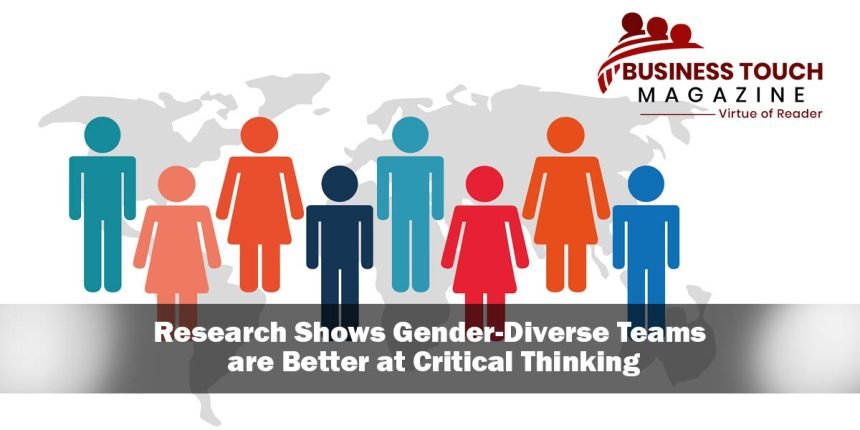The business world has always had this debate about how gender-diverse team outcomes will be there. Does diversity make the team strong and make their performance outshine and enhance the overall productivity. Many agree with the idea but many do not. Let’s not judge by what is the opinion in general, rather let us see the results of the research which is based on proven data and results. During the result of research in the same area, it was found that gender diversity leads to better innovative thinking and can really add up for any business. Having a thoughtful workforce will eventually affect productivity and also ensure the growth of the company.
One of the studies by Professor Zhang which was applied to 1,070 companies in 30 different countries and 25 industrial sectors, showed that gender diversity relates to more productive companies, as measured by market value and revenue, only in contexts where gender diversity is viewed as “normatively” accepted. By normative acceptance, it indicates an extensive cultural belief that gender diversity is vital.
In other words, we can say that gender diversity creates a self-rewarding cycle. Under adequate circumstances, teams may benefit from many types of diversity, like scientific discipline, work experience, gender, ethnicity, and nationality. But here we highlight gender diversity. Presented by crucial research findings, it was projected that “mechanisms for innovation” specify why gender diversity staples for scientific discovery and what managers should do to maximize its benefits. Encouraging greater diversity is not only the right thing to do but it also allows organizations to derive an “innovation share” that leads to cleverer, more imaginative teams.
Teams that are gender-diverse and comprehensive inclined to beat those teams that are gender-homogenous — sometimes as much as 50% improvement is seen. In many industries we still see a gender gap where men prodigiously are more numerous than women in the total number of employees, still, the point serves right that there are noteworthy benefits to having equal gender representation in a team and there are greater chances of more productive results. For example, women are 34% better at working out compromises and 25% better at mentoring. When associating employee performance between nondiverse and diverse organizations, research shows a 12% diversity increase, with similar improvements in employee preservation as well.
Gender diversity may also be a catalyst for new findings by the expansion of the lookouts, questions, and zones addressed by researchers. Using topic modeling—a form of mechanical text analysis appropriate for studying content disparities in large trials of scholarly documents—a new study in management science finds that scholarly advancement by teams dominated by women typically poses different queries and engage in different research topics than team dominated by men. Articles with women writers are, more likely to accept somber and employee-centered perspectives on organization, whereas men-dominated studies tend to be more prescriptive and operational in their focus. This draws us to the same results that gender diversity can be the solution when we are incorporating a team of scholarly employees.
Taken collectively, the above-mentioned apparatuses show some very strong results based on data collected while experimenting. The growing standing of teams in knowledge production, combined with women’s educational gains in science and engineering, pushes gender diversity to the head of capable new chances. There are methods that can help found more helpful institutional settings, where both gender diversity and modernization thrive.
How to Fashion Gender Diversity in the Office
Build a comprehensive office
Before trying to hire for gender diversity, look within and gauge your company culture. Is your company a good place to work, irrespective of gender? Do you treat people across the gender spectrum equally? A comprehensive culture will help build your company brand, so you can appeal and hold a diverse workforce.
Write better job descriptions
Improve gender diversity in the workplace by eliminating gender biases from your job requirements, also before you talk with a contender. Men are meant to apply if they are 60% qualified, although women will only apply when they are 100 percent qualified.
Provide your team with fair training
Biases exist, and knowing them is the first step in the direction of disabling them in the hiring process. For instance, when recruiters only have appearances to go by, both males and females are twice as likely to hire a man than a woman.




